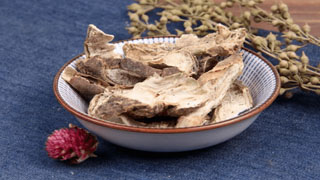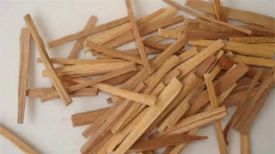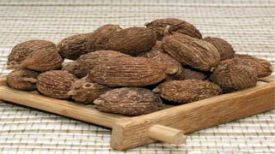
1. Aliases
Dragon Tongue, Fire Palm, Immortal Palm, Phoenix tailed Bougainvillea, Pinglu Grass, Old Crow Tongue, Immortal Palm, Guanyin Palm, Guanyin Sting, Overlord Tree, Thorny Palm, Fanhua, Kirin Flower, Buddha Hand Sting, and Avoiding Fire Zan Hairpin.
2. Plant morphology
Perennial fleshy plants, often clustered in shrubs. The lower part of the stem is slightly woody, nearly cylindrical, with branches and nodes in the upper part; The stem nodes are flat, obovate to elongated, bright green when young, turning blue-green when old, sometimes covered with white powder. Small nodules are scattered on them, and each nodule is clustered with several needles and most inverted short prickly hairs, with yellow needles and yellow brown spots. Leaves degenerate into diamond shaped and fall early. Flowers solitary or clustered at the top edge of stem nodes, bright yellow; The perianth segments are mostly green on the outside, gradually becoming petal shaped inward and broadly obovate; Stamens numerous, arranged in several rounds, anthers 2-chambered; Ovary inferior, 1-loculed, style robust, stigma white. The berries are juicy, obovate or pear shaped, with a purple red color. Most seeds. The flowering period is from May to June.
3. Origin distribution
Cacti grow in open spaces along coastal beaches, on sunny and dry slopes, rocks, roadsides, or villages. Distributed in southwestern and southern China, as well as Zhejiang, Fujian, Jiangxi and other places.
4. Harvesting and processing
After one year of cultivation, it can be used and harvested as needed. Fresh or sliced and sun dried.
5. Characteristics of medicinal herbs
Cactus is used as medicine in whole plants (excluding thorns). The old stem near the base is cylindrical, while the rest are palm shaped and flat. Each section is obovate to elliptical, with a length of 6-25 centimeters or longer, a diameter of 4-15 centimeters, and a thickness of 0.2-0.6 centimeters. The surface is grayish green to yellow brown, with most remaining traces due to the removal of sharp thorns and hairs from small tumors. The texture is brittle, easy to break, and the cross-section is slightly powdery, gray green, yellow green to yellow brown. Mild in flavor and sour in taste.
6. Nature, taste, and meridian tropism
Cold in nature and bitter in taste. Return to the stomach meridian, lung meridian, and large intestine meridian.
7. Effect and function
Promote qi and blood circulation, cool blood and stop bleeding, detoxify and reduce swelling. A heat clearing and detoxifying medicine belonging to the subcategory of heat clearing drugs.
8. Clinical applications
Dosage 10-30 grams, decoct and take; Or 3-6 grams, roasted and ground; Or mash the juice. Mash an appropriate amount of fresh cactus for external use. Indications include stomach pain, lumps, dysentery, sore throat, lung heat and cough, tuberculosis, hemoptysis, vomiting blood, hemorrhoids, ulcers, mastitis, mumps, tinea, snake and insect bites, burns, and frostbite.
9. Pharmacological research
Cactus has effects such as lowering blood sugar, anti gastric ulcer, anti-inflammatory, analgesic, anti stress, and antibacterial. In addition, it can also delay aging.
10. Chemical composition
Analysis of green cactus raw medicine syrup containing pectin polysaccharides and gum exudates. The whole plant contains components such as free terpenes, free terpene-3 alpha alcohols, dandelion ketones, and dandelion ketones.
11. Taboos for use
Those with deficiency cold should avoid using it. According to Lingnan Zaji, its juice can enter the eyes and cause blindness.
12. Compatibility prescription
1. Treatment of headache: Peel off the prickles of the cactus, cut it into two pieces, sprinkle salt on the cross-section, close it, wrap it in wet grass paper, tie it with thin iron wire and fix it in place, simmer it over heat until it is eight times ripe. Apply the profile to the forehead and temporal area, fix it with adhesive tape, and stick it for 4 hours each time. It can be used continuously. (Fujian Pharmacopoeia)
2. Treatment for hemorrhoid bleeding: 30g of cactus, 250g of stewed beef, taken orally. (Interpretation of Grass and Wood Bian Fang Today)
3. Treatment of cervical lymph node tuberculosis: Cut open two sections of the cactus stem, sprinkle calcined oyster powder on the section, close and bake hot, take a section containing oyster powder and apply it to the affected area, fix it with adhesive tape. (Fujian Pharmacopoeia)
4. Treating baldness on the head in children: Cactus is roasted to the end, mixed with sweat and oil without sweat. (Puji Fang)
The content of the article is for clinical reference only. Non professionals in traditional Chinese medicine are not allowed to try medication.


